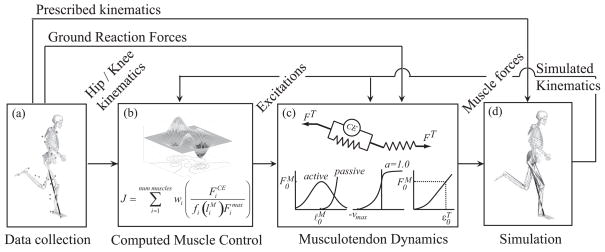Figure 1.
A graphical depiction of how the simulations were generated. (a) Kinematic and kinetic data were first collected as each subject sprinted on a treadmill. (b) A computed muscle control algorithm (31) was used to generate the excitation patterns that drove the limb to closely track measured hip and knee kinematics. (c) Excitations were inputs into Hill-type models of musculotendon dynamics, which produce force that drive sagittal plane hip and knee motion. All other degrees of freedom were prescribed to follow measured trajectories, while ground reaction forces and moments were applied directly on the lower limbs. (d) Simulations were then generated, from which hamstring force, negative and positive work could then be determined.

